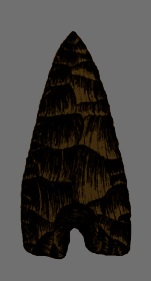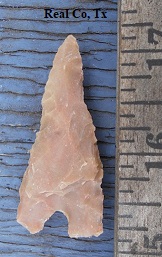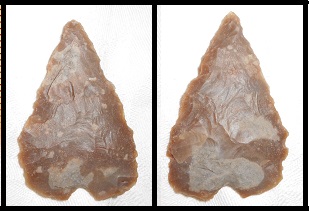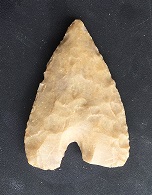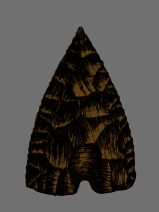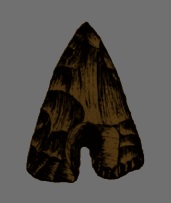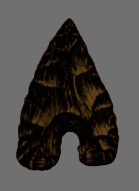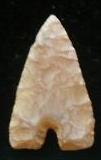Outline is Representative of Size and Shape:

Name Details:
Identified By: J. W. House and Thomas R. Hester
Named For: Carrizo Springs High School Archaeological Society
Date Identified: 1963
Type Site: Multiple site in southern and southwestern Texas
Identified By: J. W. House and Thomas R. Hester
Named For: Carrizo Springs High School Archaeological Society
Date Identified: 1963
Type Site: Multiple site in southern and southwestern Texas
Point Validity:
Valid type
House was a member of the Carrizo Springs High School Archaeological Society. Hester is a well-respected anthropologist and a Professor Emeritus at the University of Texas – Austin. Hester has conducted extensive studies in archaeology of Texas. This type was named in a professional publication and has many professional references. This is considered a valid type.
House was a member of the Carrizo Springs High School Archaeological Society. Hester is a well-respected anthropologist and a Professor Emeritus at the University of Texas – Austin. Hester has conducted extensive studies in archaeology of Texas. This type was named in a professional publication and has many professional references. This is considered a valid type.
Carrizo Triangular
Cluster: Description of Physical Characteristics and Flaking Pattern:
This is a medium triangular point with a flattened to elliptical cross section. The blade is primarily excurvate. The base may vary from slightly convex to straight. The base ranges from straight to slightly convex with a center basal notch. The basal corners are commonly rounded. The base is commonly thinned using short longitudinal flakes. The flaking is usually fine and has a random flaking pattern.
Size Measurements:
Total Length - 25 to 90 mm (average 40 to 55 mm), Blade Width - 22 to 38 mm
Total Length - 25 to 90 mm (average 40 to 55 mm), Blade Width - 22 to 38 mm
Commonly Utilized Material:
Additional Comments:
John Haberer notes that exhausted Montell type point can take a similar appearance. The Montell point is noted for the square "bucktooth" appearance of the stem similar to the second and third picture.
John Haberer notes that exhausted Montell type point can take a similar appearance. The Montell point is noted for the square "bucktooth" appearance of the stem similar to the second and third picture.
Distribution: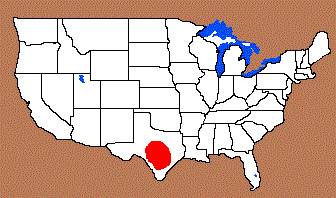
Distribution Comments:
This point is primarily found in southern Texas primarily in Dimit, Zavala, Frio, and LaSalle Counties. This point is found with decreased frequency into central Texas.
This point is primarily found in southern Texas primarily in Dimit, Zavala, Frio, and LaSalle Counties. This point is found with decreased frequency into central Texas.
Age / Periods:
Date: 5,000 - 3,000 B.P.
Cultural Period: Middle to Late Archaic
Glacial Period: Middle Holocene to Neoglacial
Culture:
Date: 5,000 - 3,000 B.P.
Cultural Period: Middle to Late Archaic
Glacial Period: Middle Holocene to Neoglacial
Culture:
Age Details:
Other points in this cluster / Related / Associated Points:

